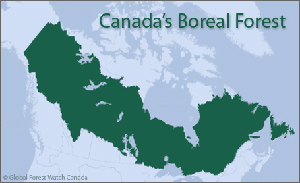Parks
Over the past decade, a succession of world charters have called for accelerated protection efforts. Canada's national parks, national historic sites and related protected heritage areas are among the most enduring and cherished symbols of Canada's life, land and history.
The Parks Canada Agency administers three major systems of protected areas, which include 42 national parks, 2 national marine conservation areas and 154 national historic sites across Canada.
Canada has created the world's biggest freshwater reserve spanning more than one million hectares of Lake Superior.
The new Lake Superior National Marine Conservation Area will include the lakebed, islands and north shorelands within its 10,000-square kilometer (3,860-mile) boundaries. Supporters of the new park include Britain's Duke of Edinburgh, the World Wildlife Fund (WWF), Canadian astronaut Roberta Bondar, and Canadian Explorer to name a few.
Borial Forests
At 1.3 billion acres, the Canadian Boreal Forest is one of the largest intact forest and wetland ecosystems remaining on earth. It is a major source of North America’s fresh water and home to the some of the planet’s largest populations of wolves, grizzly bears, and woodland caribou.

Image provided by Nature Canada
The Boreal Forest is the single-largest terrestrial carbon storehouse in the world. The Canadian Boreal Forest alone stores 186 billion tonnes of carbon – equivalent to 27 years of the world’s carbon dioxide emissions from the consumption of fossil fuels.
Its vast lakes and rivers offer up fish in abundance and its trees and wetlands provide nesting grounds for billions of songbirds and waterfowl. Hundreds of First Nations communities also depend on the Boreal Forest ecosystem for fish and wildlife.